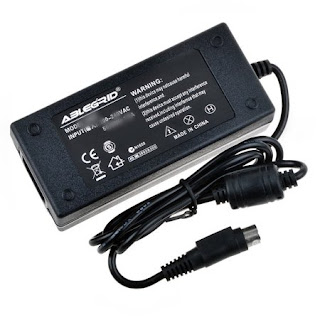You can’t open a magazine, got a web site or attend an event these days without hearing the term Internet of Things or IoT. Seems like today everything can or should be connected. Nice idea, but what does it mean if you’re thinking about security?
Open standards
To start, you should know that any kind of IP-based video surveillance and physical access control devices such as security cameras and door controllers are in fact IoT devices (in fact, we invented what many call the first IoT device 20 years ago when we launched our first network camera, but that’s another story). These connected devices offer non-proprietary and open standards allowing users to integrate them with other devices and software as they wish and without restrictions.
The further adoption of IoT will drive this integration beyond currently separate device categories. There is a huge opportunity to manage multiple systems with just one management console. From smoke and gas sensors to video surveillance, physical access control, loudspeakers, air conditioning and heating, escalators and elevators to window shades, light switches and automatic doors – all these devices can be managed together with the IoT.
Internet of Security Things
From a security standpoint, IoT is more than just cameras. For example, Axis introduced what is best described as an IoT loudspeaker in March of 2015. It can be integrated with just about anything. You can even assign it a phone number and make announcements through making respective calls to that number.
A quick primer on how something like that works: it is a self-contained loudspeaker that offers signal transmission, decoding, amplification, microphone and speaker all in one unit. Unlike analog loudspeakers, there is no need for a separate amplifier. An external power supply is also not required, thanks to Power over Ethernet (PoE) support. It can therefore be very flexibly installed as an extension to existing security systems allowing operators to deter unwanted activity without having to send a security guard to the scene, for example.
This is just one example of a new breed of security products. We are seeing the beginning of what is probably best named the “Internet of Security Things.” Open standards will allow previously separate device categories to be used together and accessed via a single management console. This will make security systems easier to use while providing better situational awareness and overviews of incidents.
A Guide to Troubleshooting Smart Devices and The Internet of Things
STAGE 1 - GOOGLE.
On the off chance that you are experiencing an issue, chances are the appropriate response can be discovered utilizing a web index. Begin here first!
STAGE 2 - LOOK FOR CLUES ON THE DEVICE ITSELF.
Many brilliant gadgets will have blazing lights or different markers when something turns out badly. This can give intimations to what is happening.
STAGE 3 - CHEAK THE APP FOR THE DEVICE.
Most shrewd gadgets have a comparing application for an advanced cell. This application can more often than not recognize when the gadget is failing and give you tips to reestablish usefulness.
STAGE 4 - TURN IT OFF AND ON AGAIN.
Indeed, this may appear antique, yet killing your gadget and on again may settle the issue! It just pauses for a moment or two, so you should try it out.
STAGE 5 - CHEAK THE POWER SOURCE.
On the off chance that your savvy gadget would not kill and on, there's likely some kind of problem with the power source. Ensure the gadget is truly getting force, either from a battery or power string.
STAGE 6 - DIG OUR THE INSTRUCTION MANUAL.
On the off chance that despite everything you have the guidance manual for the item, now would be a decent time to get it out. There's typically an accommodating investigating area close to the back. The guidance manual will contain data on the most proficient method to reset the gadget, as well.
STAGE 7 - CHECK YOUR WI-FI CONNECTION.
On the off chance that your gadget interfaces with Wi-Fi, ensure your Wi-Fi switch is working. You can without much of a stretch test this by checking whether different gadgets associate with the Wi-Fi. Have a go at heading off to some extraordinary sites as a test. In the event that your Wi-Fi isn't working, have a go at unplugging the switch and connecting it back.
On the off chance that that doesn't help, associate your PC to the divider with an Ethernet rope. On the off chance that despite everything you can't get to the web through the Ethernet rope, contact your web access supplier.
STAGE 8 - RESET THE DEVICE.
In the case of nothing has worked, you can attempt to reset the gadget back to processing plant default settings.
Alert! This will expel every one of your settings and should just be done if all else fails. You should experience the gadget set up process once more.
In the event that you have the guidance manual, it should state how to reset the gadget. In the event that you don't have the guidance manual, look the web for the manufacturing plant reset process.
STAGE 9 - CONTECT THE EXPERT.
In the event that you have attempted each and every one of these means without much of any result, it's an ideal opportunity to acquire the specialists. There might be an equipment issue with your shrewd gadget. Check the gadget maker's site for help with guarantees and fixes.











No comments:
Post a Comment